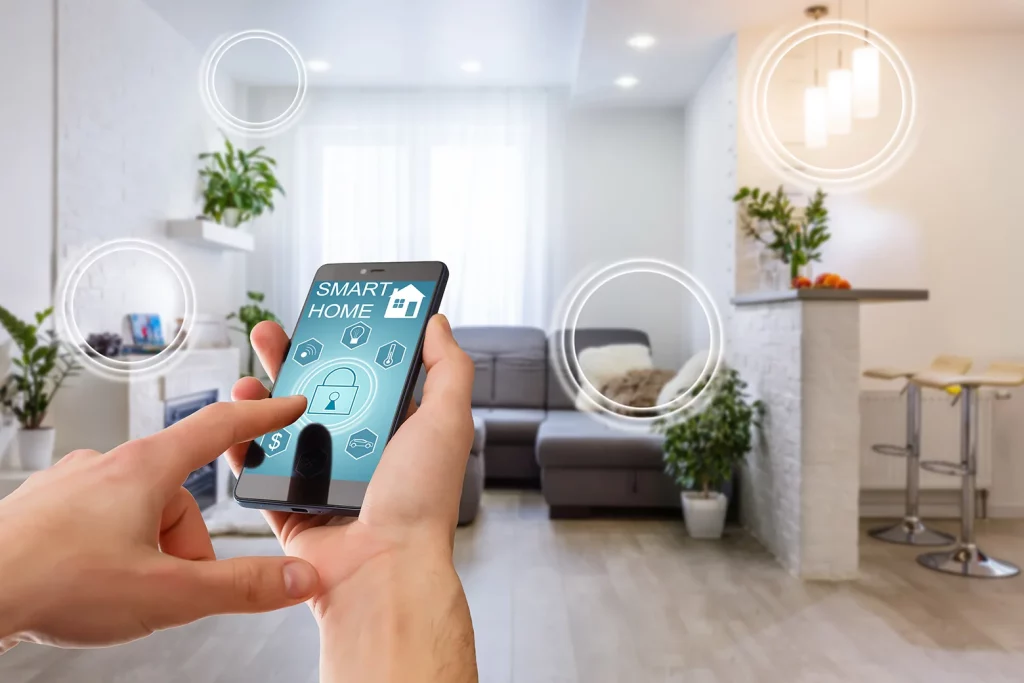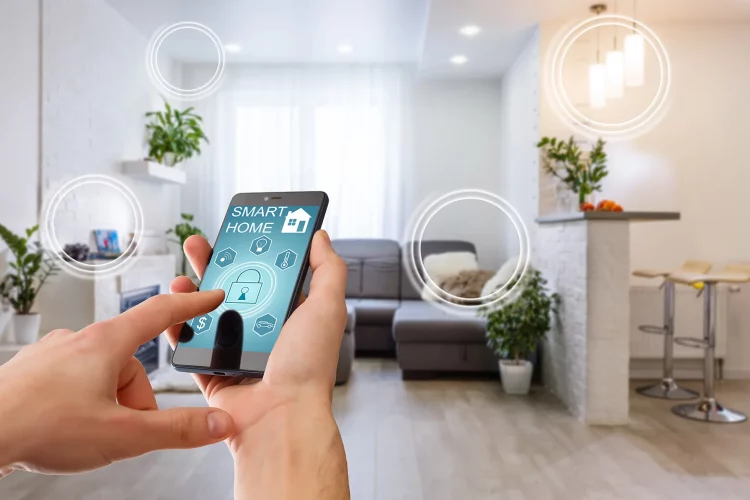Introduction
In today’s rapidly evolving technological landscape, smart home devices have become integral parts of modern living. From voice-controlled lighting to automated climate control and security systems, these gadgets promise to make life more convenient, secure, and efficient. As the demand for smart home technology continues to grow, more consumers are looking to integrate these devices into their daily lives. However, with a wide variety of products available, choosing the right smart home devices can be overwhelming.
When selecting smart home devices, there are a number of critical factors that must be considered to ensure that you are making an informed decision. These include compatibility, security, ease of use, cost, and integration with other smart devices. The success of a smart home system relies on choosing devices that work seamlessly together, meet specific needs, and fit within your budget.
This article explores the key factors you should evaluate when choosing smart home devices to ensure that your home is not only smarter but also safer, more energy-efficient, and user-friendly.
1. Compatibility: The Foundation of a Smart Home System
1.1 Why Compatibility Matters
The compatibility of smart home devices with each other and with your existing systems is one of the most critical factors when building a smart home. No matter how advanced a device is, it won’t serve its purpose if it doesn’t work well with the other devices in your ecosystem.
A key consideration here is the central hub or platform that your smart devices will communicate through. Some smart home devices require a specific hub (e.g., Amazon Echo, Google Nest Hub, Apple HomeKit), while others can operate via Wi-Fi or Bluetooth without the need for a central hub. Before purchasing a smart device, you need to make sure that it is compatible with your chosen hub and any other devices you already have.
1.2 Different Ecosystems and Platforms
The major platforms for smart home devices are Amazon Alexa, Google Assistant, Apple HomeKit, and Samsung SmartThings. These platforms allow users to control smart home devices via voice commands or apps on their smartphones.
- Amazon Alexa: A popular choice for a broad range of smart home devices. It works with most smart home products and has a large ecosystem of compatible devices. Many Amazon Echo devices act as hubs for Alexa-enabled devices, making them ideal for smart home setups.
- Google Assistant: Works with Google Home and Nest products, as well as a wide range of third-party smart devices. Google’s ecosystem integrates well with its other services, such as Google Calendar, Google Photos, and YouTube.
- Apple HomeKit: Known for its seamless integration with Apple products, HomeKit works with iPhones, iPads, Apple Watches, and Siri voice assistant. It is an excellent choice for users already invested in Apple’s ecosystem.
- Samsung SmartThings: SmartThings offers compatibility with a range of third-party devices, from lights and cameras to sensors and thermostats. It is also known for supporting both Zigbee and Z-Wave protocols, allowing for easy integration.
It is essential to know which platform your smart home devices support before making any purchases. Cross-platform compatibility is possible, but it might require additional setup or third-party apps, which can sometimes complicate the user experience.
1.3 Verdict: Compatibility
When choosing smart home devices, ensure that the products you select are compatible with your existing devices and the platform you intend to use. If you already have an Amazon Alexa or Google Assistant-based ecosystem, it’s best to choose devices that support those platforms for a seamless experience.
2. Security: Protecting Your Smart Home
2.1 The Importance of Security in a Smart Home
As the popularity of smart homes grows, so does the risk of cyber-attacks and unauthorized access. Since smart home devices are often connected to the internet, they can become targets for hackers looking to gain control over your home or steal your personal information. Therefore, security should be a top priority when choosing smart home products.
2.2 Key Security Features to Look for
- End-to-end encryption: Look for devices that use encryption to secure communication between your devices and cloud servers. AES-256 encryption is one of the most secure standards.
- Two-factor authentication (2FA): Many smart home systems support 2FA, adding an extra layer of security by requiring you to confirm your identity using another method, such as a code sent to your phone.
- Automatic software updates: Smart devices should be regularly updated to protect against security vulnerabilities. Ensure that the products you choose receive automatic updates and security patches.
- User authentication: For devices like smart locks or security cameras, look for those that offer strong user authentication, such as facial recognition or biometric access.
- Device isolation: Some smart home ecosystems allow you to isolate certain devices from the rest of your network, reducing the risk of a potential breach spreading throughout your system.
2.3 Common Security Risks
Some of the common security risks associated with smart home devices include:
- Weak passwords: Many smart devices come with default or weak passwords that can be easily guessed by hackers.
- Data breaches: If your devices send data to cloud servers, there is always a risk of sensitive data being leaked if those servers are compromised.
- Unauthorized access: If a hacker gains control over your home automation system, they could unlock doors, access cameras, or disable your alarm systems.
2.4 Verdict: Security
When selecting smart home devices, it is important to prioritize security features and ensure that the devices support strong encryption, regular updates, and authentication measures. Additionally, always change the default passwords to strong, unique passwords to minimize the risk of unauthorized access.

3. Ease of Use: Simplicity and Convenience
3.1 User-Friendliness
The usability of your smart home devices directly impacts your overall experience. If a device is too complex to set up or difficult to use, it defeats the purpose of enhancing your daily life. Look for devices that offer intuitive interfaces, whether through a mobile app, voice control, or web dashboard. Ease of use is crucial in ensuring that you can control your devices effortlessly without spending too much time troubleshooting.
3.2 Installation and Setup
Some smart home devices require complex installation or advanced technical knowledge, while others can be easily installed by a non-tech-savvy user. Many modern smart devices are designed to be plug-and-play, meaning you can set them up within minutes without much hassle. Wireless setup (e.g., using Wi-Fi) and QR code scanning to connect devices are common features of easy-to-install devices.
Smart hubs, for example, often come with a detailed app that guides you through the setup process step by step. Smart locks and thermostats may require a little more effort, particularly if they need to be wired into your existing system.
3.3 App and Voice Control Integration
Most smart devices come with a companion app that lets you control settings, monitor devices, and automate tasks. Apps should have an intuitive user interface that makes it easy to access and control devices. Look for apps that are well-rated, regularly updated, and compatible with iOS and Android.
In addition to mobile apps, many smart home devices support voice assistants like Amazon Alexa, Google Assistant, or Apple Siri. If you prefer to control your devices hands-free, check to see if your device is voice-enabled and compatible with your chosen voice assistant.
3.4 Verdict: Ease of Use
Look for smart home devices that are easy to set up, have intuitive interfaces, and offer voice or mobile app control. Devices that require minimal effort to set up and operate will enhance the overall experience and make managing your smart home more convenient.
4. Cost and Value: Balancing Budget with Features
4.1 The Cost Factor
Cost is another essential consideration when selecting smart home devices. Smart technology varies greatly in price, from affordable gadgets like smart bulbs and plugs to expensive devices like security cameras, smart refrigerators, and home automation systems. It’s important to set a budget and choose devices that offer the best value for the price.
4.2 Value for Money
While low-cost devices may seem appealing, be sure to assess their overall value. Sometimes, it’s worth investing in premium devices that offer better performance, advanced features, and long-term durability. Additionally, consider factors such as energy savings, maintenance costs, and integration with other systems when evaluating value.
4.3 Verdict: Cost and Value
To get the most value from your smart home investments, focus on balancing cost and functionality. Opt for devices that fit within your budget, but prioritize those that offer long-term benefits, energy savings, and compatibility with other devices in your smart home ecosystem.
Conclusion
When choosing smart home devices, it’s essential to consider the key factors of compatibility, security, ease of use, and cost. By carefully evaluating these aspects, you can ensure that your home automation system works smoothly, is secure from cyber threats, and provides the convenience and value you’re looking for.
Whether you’re just beginning your smart home journey or upgrading an existing system, taking the time to make informed decisions will result in a more efficient, comfortable, and enjoyable living space.











































